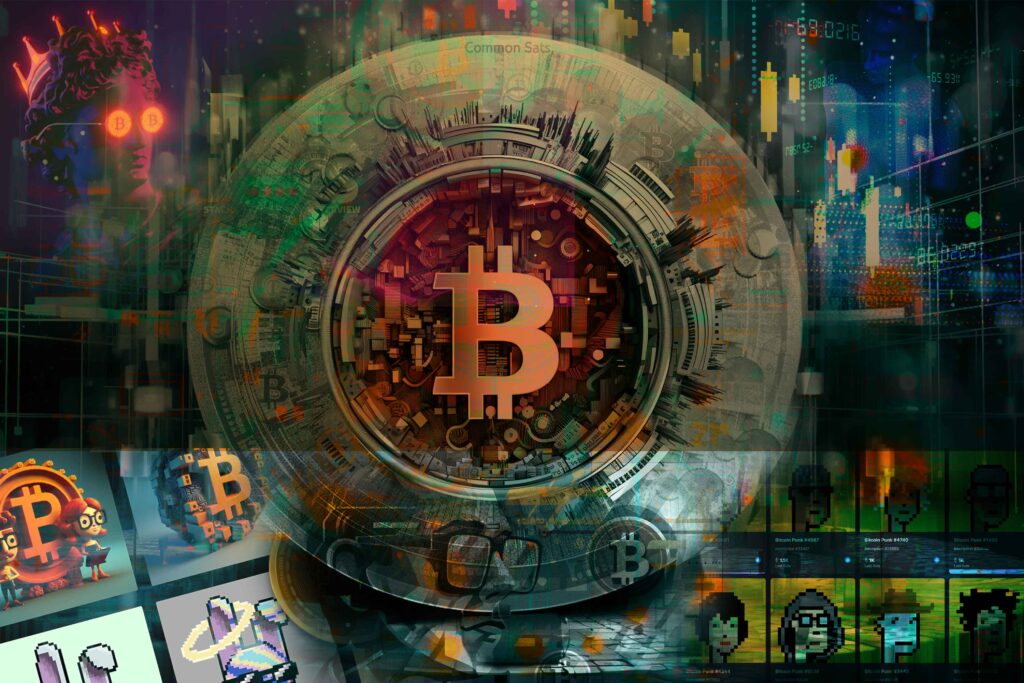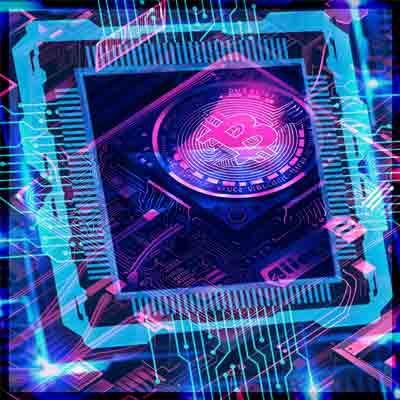Bitcoin Ordinals: A Quick Guide
Mar. 20, 2024.
6 min. read.
Interactions
What the heck is 'Bitcoin Ordinals'?
Non-fungible tokens (NFTs) used to be the sole domain of Ethereum and other smart contract networks like Cardano and Solana. During the 2021 bull run, the world caught crypto JPEG fever thanks to collections like Crypto Punks, Bored Ape Yacht Club (BAYC) and 2024 darling Pudgy Penguins (now in a Walmart near you), and Ethereum was the infrastructure that captured most of the value.
In early 2023, a new challenger kicked open the saloon doors, making a crazy entrance into the Wild West of crypto: Ordinals. The crazy part comes with that it lives on the Bitcoin blockchain, which is notoriously slow (only seven transactions per second) and with a hardcore Bitcoin maxi community strongly resistant to any change.
Despite this, it’s been up only for Bitcoin Ordinals, as over 64 million have been minted by the time of this article.
What are Bitcoin Ordinals?
Ordinals in their current form were introduced by Bitcoin developer Casey Rodarmor on 21 July 2022 with the publication of his Ordinal Theory paper.
Bitcoin Ordinals are a way of assigning a unique identifier to each satoshi (sat), the smallest unit of Bitcoin, based on the order in which it was mined. By assigning an ordinal number to each sat, it becomes possible to create unique, distinguishable assets on the Bitcoin blockchain. This means that every single sat can be individually tracked and associated with specific data, such as images, videos, or other digital artifacts.
According to Rodarmor, Ordinals’ genesis can be traced back to Satoshi Nakamoto’s creation of the Bitcoin blockchain in 2009. That means that especially early Ordinals have a historical significance within the blockchain’s timeline. He also noted that the concept of ordinals was independently discovered multiple times, predating the NFT boom by nearly a decade, most notably:
- Litecoin creator Charlie Lee’s 2012 proposal on the Bitcoin Talk forum to integrate proof-of-stake using the ordinal algorithm
- jl2012’s introduction of a decimal notation scheme that mirrored key features of ordinals.
Although neither proposal was fully realized, they underscore the enduring interest and potential of ordinals within the Bitcoin community, long before their recent surge in popularity.
Rodarmor wrote,
These independent inventions of ordinals indicate in some way that ordinals were discovered, or rediscovered, and not invented. The ordinals are an inevitability of the mathematics of Bitcoin, stemming not from their modern documentation, but from their ancient genesis. They are the culmination of a sequence of events set in motion with the mining of the first block, so many years ago.
How do Bitcoin Ordinals work?
Creating a Bitcoin Ordinal involves ‘inscribing’ data onto a specific sat, hopefully the rarer the better. This is done by embedding the inscribed data into the witness data of a Bitcoin transaction, using the ordinal number of the sat as a reference point.
To understand how this works, let’s break down the technical details:
- Ordinal numbers: Each sat is assigned an ordinal number based on its position in the blockchain. The first sat in the genesis block is assigned the number 0, the second sat is assigned 1, and so on. This numbering scheme continues sequentially throughout the entire Bitcoin blockchain.
- Inscribing: An inscription is the process of embedding data (such as an image or video) into a Bitcoin transaction using the ordinal number of a specific sat. This is done by including the data in the witness data of a taproot script-path spend.
- Taproot and SegWit: Bitcoin Ordinals leverage comparatively new upgrades to the Bitcoin protocol, specifically Taproot and Segregated Witness (SegWit). These provide more flexibility in the types of transactions that can be recorded on the blockchain, making it possible to embed larger amounts of data.
- Transfers and ownership: Once an inscription is made, the associated sat can be transferred or sold just like any other Bitcoin. The ordinal number and associated data remain linked to the sat throughout its lifetime on the blockchain.

Rodarmor Rarity Index
According to the Rodarmor Rarity Index, created by Casey Rodarmor, the developer of Ordinal Theory, satoshis can be classified into different categories based on their rarity. About 99% of sats are considered Common Sats.
Uncommon Sats are the first sat of each newly mined block, occurring roughly every 10 minutes. Rare Sats are the first sat of the block mined after a Bitcoin network difficulty adjustment, which happens every 2,016 blocks or about two weeks. Epic Sats are the first satoshi mined in the block immediately following a Bitcoin halving event, occurring every 210,000 blocks or roughly four years.
Legendary Sats are the first satoshi mined when a difficulty adjustment and halving event coincide, which will happen only once every 24 years, with the first instance scheduled for 2032. Finally, the Mythic Sat is the first-ever satoshi mined by Satoshi Nakamoto in the genesis block in 2009.
Magic Eden Rare Sats
Magic Eden drive most Ordinals sales, and have created their own version of the Rodarmor Rarity Index. Let’s go over it:
- Nakamoto Sats: Highly sought-after sats mined by Bitcoin’s pseudonymous creator, Satoshi Nakamoto.
- First Transaction Sats: Sats originating from the first-ever Bitcoin transaction on January 12, 2009, when Satoshi Nakamoto sent 10 Bitcoins to Hal Finney.
- Palindrome sats: Sats whose numbers can be read the same forwards and backwards (e.g., 16661 or 23832), adding a layer of rarity and curiosity.
- Vintage Sats: Sats mined within the initial 1,000 blocks of the Bitcoin blockchain, marking the dawn of Bitcoin.
- Pizza Sats: Sats from the iconic transaction on May 22, 2010, where a programmer paid 10,000 Bitcoins for two Papa John’s pizzas worth $27 at the time, and thereby created a monetary value for BTC.
- Block 9 Sats: Some of the oldest sats in circulation, mined in one of the earliest blocks and offering a tangible connection to Bitcoin’s beginnings.
- Block 78 Sats: Sats from the block mined by Hal Finney, marking the first instance where someone other than Satoshi Nakamoto (or is it???) contributed to the blockchain’s growth.
The Essential Ordinals and Rare Sat Tool Case
Some of the best tools for exploring the world of Ordinals include Ordpool.space for tracking Ordinals in the mempool, Liquidium.finance for Ordinals DeFi, and Ordiscan.com for checking your wallet for assets like runes.
Geniidata and Ord.io are popular Ordinals explorers, while Sating.io and Automated Sat Hunter by Deezy Labs helps you scan your wallet for rare sats. For launching your own Ordinals project, consider Ordzaar, and for inscribing data, Ordinalsbot is the go-to.
Conclusion
Bitcoin Ordinals represent a significant development in the evolution of Bitcoin, enabling the creation of unique, NFT-like digital assets native to the Bitcoin blockchain. While the concept is still relatively new, it has the potential to unlock a wide range of use cases and drive innovation in the Bitcoin ecosystem, which includes anything from digital art to gaming to even digital identity. With Bitcoin layer-2 chains also improving in leaps and bounds, the future looks extra-ordinally bright (sorry, couldn’t resist!) for this new digital asset class.
Let us know your thoughts! Sign up for a Mindplex account now, join our Telegram, or follow us on Twitter.

.png)

.png)


.png)










33 Comments
33 thoughts on “Bitcoin Ordinals: A Quick Guide”
Come on baby
🟨 😴 😡 ❌ 🤮 💩
Informative
🟨 😴 😡 ❌ 🤮 💩
Good topic
🟨 😴 😡 ❌ 🤮 💩
thats good
🟨 😴 😡 ❌ 🤮 💩
my mpxr point nai kano
🟨 😴 😡 ❌ 🤮 💩
informative information
🟨 😴 😡 ❌ 🤮 💩
reading in the best
🟨 😴 😡 ❌ 🤮 💩
thanks for the information!
🟨 😴 😡 ❌ 🤮 💩
this is great!
🟨 😴 😡 ❌ 🤮 💩
nice info
🟨 😴 😡 ❌ 🤮 💩
Interesting Reading. Thank you!
🟨 😴 😡 ❌ 🤮 💩
Amazing, I like it
🟨 😴 😡 ❌ 🤮 💩
Great!
🟨 😴 😡 ❌ 🤮 💩
Nice
🟨 😴 😡 ❌ 🤮 💩
🤩🤩🤩
🟨 😴 😡 ❌ 🤮 💩
read more
🟨 😴 😡 ❌ 🤮 💩
Interesting read
🟨 😴 😡 ❌ 🤮 💩
Evolution is coming!
🟨 😴 😡 ❌ 🤮 💩
Interesting
🟨 😴 😡 ❌ 🤮 💩
good project
🟨 😴 😡 ❌ 🤮 💩
Good project
🟨 😴 😡 ❌ 🤮 💩
https://x.com/runifatima126/status/1772687886841790788?s=20
🟨 😴 😡 ❌ 🤮 💩
good project
🟨 😴 😡 ❌ 🤮 💩
wow its a very helpful article
🟨 😴 😡 ❌ 🤮 💩
Good project
🟨 😴 😡 ❌ 🤮 💩
Great job
🟨 😴 😡 ❌ 🤮 💩
Niceee
🟨 😴 😡 ❌ 🤮 💩
wow
🟨 😴 😡 ❌ 🤮 💩
Good project
🟨 😴 😡 ❌ 🤮 💩
nice
🟨 😴 😡 ❌ 🤮 💩
Interesting ❤️
🟨 😴 😡 ❌ 🤮 💩
okay
🟨 😴 😡 ❌ 🤮 💩
Nice❤️
🟨 😴 😡 ❌ 🤮 💩